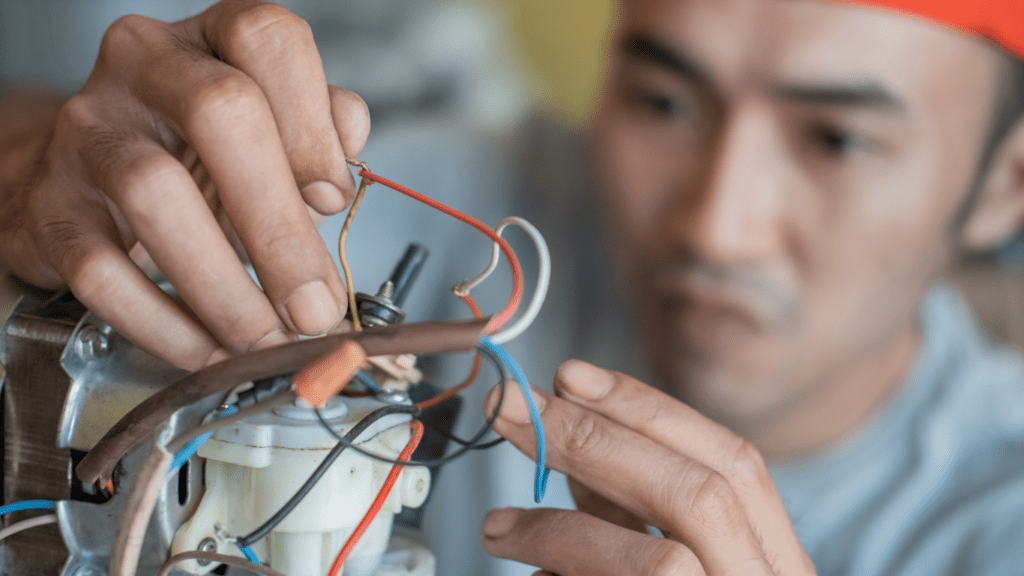In the world of network troubleshooting and repair, the integration of machine learning has revolutionized the way we approach resolving issues and optimizing performance. As an expert in the field, I’ve witnessed firsthand the impact of leveraging AI algorithms to analyze network data, predict potential failures, and proactively address concerns before they escalate. By harnessing the power of machine learning, I’ve seen networks become more resilient, efficient, and reliable.
Through my experience, I’ve come to appreciate how machine learning algorithms can not only detect anomalies in network behavior but also recommend tailored solutions to enhance overall system functionality. As I delve into the realm of network troubleshooting with a focus on machine learning, I aim to share insights and strategies that can empower network administrators and IT professionals to streamline their operations and minimize downtime.
Understanding Machine Learning in Network Troubleshooting and Repair
Exploring the realm of machine learning in network troubleshooting and repair is a fascinating journey into the world of advanced technology. Machine learning, a subset of artificial intelligence, plays a crucial role in transforming the landscape of network management. By harnessing the power of AI algorithms, network administrators can delve deep into network data, identify patterns, and predict potential issues before they escalate.
Machine learning algorithms excel at detecting anomalies in network behavior by comparing current data against historical patterns. This proactive approach enables them to forecast potential failures and take preemptive measures to address them promptly. By leveraging machine learning models, network troubleshooting becomes more efficient and effective, leading to enhanced system performance and increased reliability.
Moreover, the tailored solutions provided by machine learning algorithms offer personalized recommendations to optimize network functionality. This proactive and tailored approach not only improves system efficiency but also minimizes downtime, ultimately enhancing the overall operational efficiency of the network infrastructure.
Understanding the role of machine learning in network troubleshooting and repair empowers IT professionals to proactively manage network issues, streamline operations, and ensure optimal performance and reliability of their networks.
The Role of Machine Learning in Network Analysis
- Predictive Maintenance with Machine Learning
I leverage machine learning for predictive maintenance in network analysis. By utilizing AI algorithms, I predict potential network failures based on historical data and patterns. This proactive approach allows me to address issues before they escalate, ensuring uninterrupted network operations. - Anomaly Detection using Machine Learning Algorithms
In my network analysis, I employ machine learning algorithms for anomaly detection. These algorithms enable me to identify irregularities in network behavior that may indicate security threats or performance issues. By swiftly detecting anomalies, I can take corrective actions to maintain a secure and efficient network environment.
Implementing Machine Learning in Network Troubleshooting

Implementing machine learning in network troubleshooting revolutionizes how we manage and enhance network performance. By leveraging AI algorithms, we can predict and prevent network failures, boosting resilience and reliability. Machine learning’s strength lies in detecting anomalies in network behavior and tailoring solutions for optimized functionality, minimizing downtime. Predictive maintenance using machine learning allows us to foresee potential failures based on historical data and patterns.
An essential application of machine learning in network troubleshooting is anomaly detection. This technology swiftly identifies irregularities in network behavior, addressing security threats and performance issues promptly to uphold a secure and efficient network environment. Empowering network administrators and IT professionals with machine learning insights and strategies streamlines operations, guaranteeing optimal network performance and reliability.
Challenges and Future Directions in Machine Learning for Network Repair
In considering the challenges and future directions of applying machine learning in network repair, it’s evident that there are several key areas where advancements are crucial to optimize performance and efficiency. While machine learning has shown promise in enhancing network troubleshooting processes, there are still challenges that need to be addressed to further improve its effectiveness.
One of the primary challenges in utilizing machine learning for network repair is the need for continuous training and updating of algorithms to adapt to evolving network environments. As networks grow in complexity and scale, machine learning models must remain accurate and up-to-date to provide relevant insights for effective repair and maintenance.
Another significant challenge is the interpretation of machine learning results and the integration of these insights into actionable repair strategies. Network administrators must be able to understand and act upon the recommendations provided by machine learning algorithms to address issues promptly and prevent future failures.
Furthermore, the future directions of machine learning in network repair involve advancements in real-time monitoring and fault detection. Integrating machine learning models with monitoring systems can enable immediate identification of network anomalies and potential failures, leading to proactive repair actions before issues escalate.
Moreover, ensuring the security and reliability of machine learning algorithms used in network repair is paramount. As machine learning becomes more prevalent in network management, safeguarding these algorithms against cyber threats and ensuring their accuracy is crucial to maintaining the integrity of network repair processes.
Overall, overcoming these challenges and embracing future technological advancements in machine learning will be instrumental in enhancing the efficiency and efficacy of network repair processes, ultimately leading to more resilient and reliable network infrastructures.



